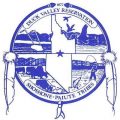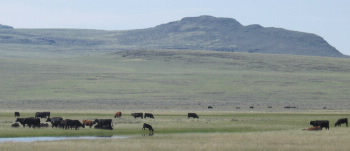
Shoshone-Paiute Tribes
- 1036 Idaho State Highway 51
Owyhee County, ID, 83604 - https://shopaitribes.org/spt/
- https://www.facebook.com/shoshonepaiute.tribes.1
-
EducationCultural Programs
-
Health & WellnessMental Health Services
Social & Health Services
-
Essential ServicesHousing
Legal Services
Tribal Services
The Tribes once freely occupied the land of their forefather’s and foremother’s in the tri-state area of what are now Idaho, Nevada, and Oregon. This however quickly changed at the coming of the populations from Europe. Land and resources were wrestled away from the Shoshone and Paiute Treaties were made with the United States of which some were ratified and others not. the chiefs signed all the treaties in good faith and for the survival of their people.
Descendents of the Western Shoshone and the Northern Paiute occupy the Duck Valley Indian Reservation of Idaho and Nevada. Various bands of the two closely related tribes have jointly utilized the area from time immemorial.
On April 16, 1877, United States President Rutherford B. Hayes established the reservation for the Western Shoshone and on May 4, 1886, United States President Grover Cleveland expanded the Reservation for the Northern Paiute through respective Executive Orders. On July 01, 1910 United States President William H. Taft further expanded the reservation by yet another Executive Order.
In the early days of the Duck Valley Reservation the people lived in earthern willow and sagebrush huts. Respective bands of Western Shoshone occupied and revolved on and off the reservation depending on their survival needs and because of the unfulfilled promises of food and supplies from the federal government. Some bands adapted as best they could and others did not want to readily leave their expanded homelands and campsites which were located off the reservation. In 1884, an effort to move the Western Shoshone to the Fort Hall Reservation in Idaho (and open up Duck Valley lands for non-indian homesteads) was successfully resisted by the headmen of the bands.
The Northern Paiute bands became allied with their kin, the Bannock in the Bannock War of 1878 and were subsequently sent to a a prisoner of war camp in Yakima, Washington. Upon their release, the survivors were returned to their homelands and the Western Shoshone Reservation was expanded for their use in 1886.
The tribal bands located at Duck Valley existed as best as they were allowed under the watchful eye of the Indian Agent and Indian Police. Farming and ranching was the mainstay for the people. The Shoshone and Paiute united at Duck Valley under the Indian Reorganization Act of 1934 and formed a tribal government through a Constitution and Bylaws which was adopted in 1936.

From 1884 through 1911 a boarding school operated on the reservation. Thereafter 3 day schools were operated in three separate locations on the reservation. In Owyhee, the Swayne School was built. In 1931 the day schools were closed and all students attended the Swayne School. Students of the higher grades were sent off reservation to boarding schools until 1946 when high school classes were added. In 1956 the reservation school system was consolidated into the Elko County School District of Nevada and today is known as the Owyhee Combined Schools (K-12). Recently, a Community Education Center was placed in Owyhee for GED and higher education courses.
The first full time physician was assigned to Duck Valley in 1882 and by 1897 a small one-room infirmary hospital was built and was replaced by 1920 with a structure which had two seven bed wards. In July of 1937 the native stone hospital was completed with a 20 bed ward, x-ray and laboratory facilities. The native stone hospital was closed in 1976 when the modern Owyhee Community Health Facility was completed.

The Shoshone-Paiute Tribes of Duck Valley are governed by the Business Council. The Business Council is composed of a Chairman, Vice-Chairman and five Council Members, all of whom are elected to serve three-year terms. The Business Council directs the Tribal government. The Chairman manages the operations of Tribal government. There are four divisions of tribal administration: Health & Human Services, Judicial Services, Tribal Programs, and Support Services.
Farming and Ranching are still mainstays for Duck Valley and is reflected in the 12,000 acres of subjugated lands. The Duck Valley Reservation is composed of 289,819 acres held in trust by the United States Government for the use and occupancy of the Shoshone-Paiute Tribes. Included in the total acreage of the Reservation is 22,231 acres of Wetlands. Wildhorse Reservoir was constructed in 1936 for the Duck Valley Irrigation Project. Tribal membership is over 2,000 with approximately 1,700 living on the reservation. The Shoshone-Paiute Tribes of Duck Valley continue to exist within the original territories of their ancestors.
